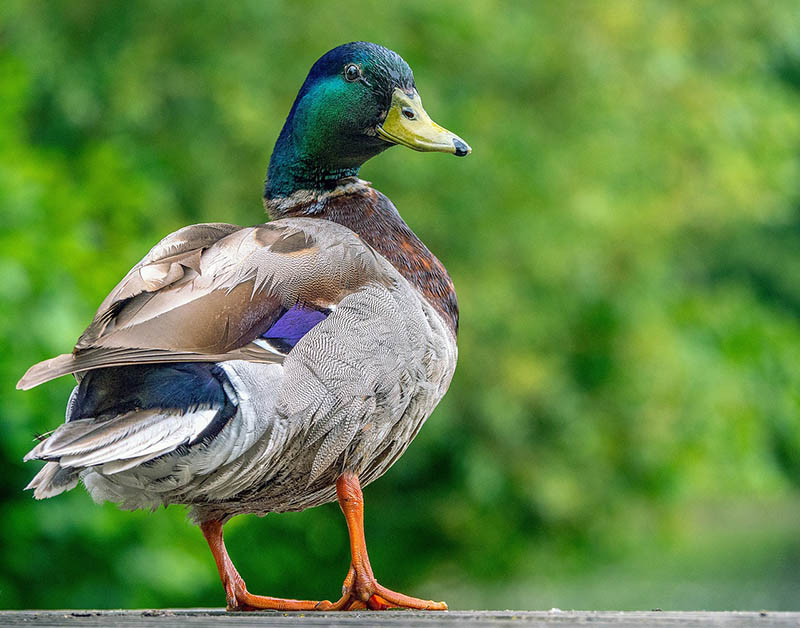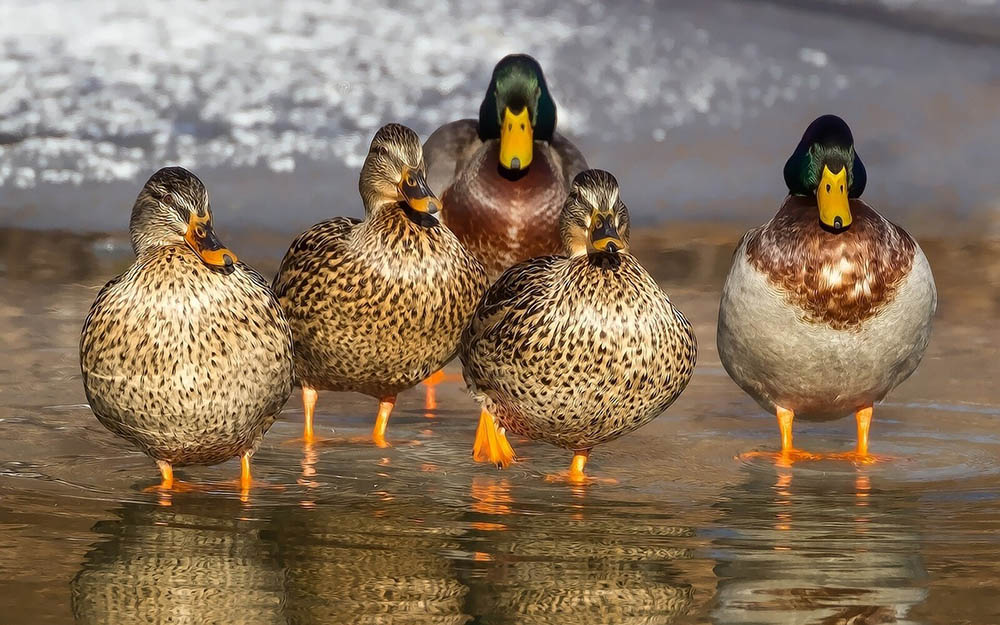How Long Do Mallard Ducks Live? (Average Lifespan Data & Facts)
Last Updated on

The mallard duck is the most common and the most easily recognized duck. In the wild, these ducks live between 5–10 years, although in captivity, they can live as long as 20 years or more. Unfortunately, eggs and ducklings make good meals for predators and the high duckling mortality rate is one of the reasons why ducks have such large brood sizes compared to other species of bird—most will not make it through their first year.

What’s the Average Lifespan of a Mallard Duck?
There are a lot of factors that determine how long a mallard will live. Young ducklings have a high mortality rate because of factors like adverse weather, predation, and human-influenced factors. In the wild, mallards that live beyond their first year will typically live between 5–10 years. Because of the high mortality rate of ducklings, the average lifespan of all ducklings is just 2 years old.
When well cared for, mallards kept in captivity can live as long as 20 years.

Why Do Some Mallard Ducks Live Longer Than Others?
A number of factors determine how long a mallard duck is likely to live, as they face a host of natural and human threats. Some of the biggest factors include:
1. Environmental Conditions
Although they have natural oils that protect them from the wet, mallards are not cold hardy. They can die as a result of unexpected cold snaps, and while their feathers can protect them from rain and the wet, they are not adapted to survive hail. Hailstorms can kill significant numbers of mallards in a short space of time.
2. Predation
Mallards come under threat from predators throughout their lives, from egg to adult. As well as being prey to animals like foxes and raccoons, they are also hunted by larger birds such as gulls and hawks. Even bullfrogs will take down ducklings, while snakes will raid duck nests for their eggs.
3. Hunting
It isn’t just animals that hunt and kill mallards. Nearly 3 million mallards were hunted and killed during the 2019–2020 hunting season in the US alone.
4. Healthcare
Ducks, like most animals, are prone to diseases and they are especially susceptible to fungal and viral infections. Outbreaks can lead to the loss of hundreds of thousands of ducks in a single area. Cholera and botulism are two of the more common illnesses that can take mallards, but there are many others.


The 5 Life Stages of a Mallard Duck
Mallards have large broods, usually migrate for winter, and can be found in virtually all parts of the mainland US, although they are less common in cold areas. They will usually be seen around bodies of water including rivers and lakes, as well as some ponds. They can live 10 years or more in the wild and they go through the following life stages:
- Egg – A hen can lay as many as 13 eggs and will usually lay an egg every day or two with incubation only starting once the whole clutch has been laid. Because development doesn’t begin until all eggs are laid, the young will usually hatch at the same time around 4 weeks after incubation begins.
- Hatchling – Once they have hatched, hatchlings depend heavily on their mothers for warmth and for protection. She will brood multiple times a day. This means that the mother mallard will sit on her young to provide body warmth and ensure safety. It takes approximately 50–60 days before hatchlings are ready to fly.
- Juvenile – A juvenile duckling is capable of flight but has not yet become sexually mature. It may still have some downy feathers and not yet fully developed the markings of the adult mallard, although it is mostly independent by this stage.
- Adult – Mallards reach sexual maturity at approximately 7 months of age. At this point, they will start to look for a mating partner and be completely independent. Although an adult duck is less likely to be killed by predators, there are still many animals that are capable of doing so, so there remains a risk of their being predated.
How to Tell a Mallard Duck’s Age
The easiest way to tell the age of a mallard is by looking at their tail feathers. A pointed tail means that the duck is a mature bird, while rounded tail feathers indicate that the bird is still immature or a juvenile bird. Young ducks may also retain some of the down of their youth, interspersed with adult feathers.

Final Thoughts
The mallard is the most commonly found duck in the Northern Hemisphere. It faces a lot of risks when living in the wild, from natural predation by animals including foxes and even larger birds to illness and infection. Even extreme cold weather or hail storms can kill many ducks at once in a single area. Taking into account the loss of approximately 50% of ducklings to these various risks, the average of the mallard is only 3 years, but for those that make it beyond the first year, the average life expectancy ranges from 5–10 years.
Featured Image Credit: Jürgen, Pixabay
About the Author Robert Sparks
Robert’s obsession with all things optical started early in life, when his optician father would bring home prototypes for Robert to play with. Nowadays, Robert is dedicated to helping others find the right optics for their needs. His hobbies include astronomy, astrophysics, and model building. Originally from Newark, NJ, he resides in Santa Fe, New Mexico, where the nighttime skies are filled with glittering stars.
Related Articles:
10 Types of Hummingbirds in Arkansas (With Pictures)
8 Types of Hummingbirds in Nebraska (With Pictures)
5 Types of Hummingbirds in Idaho (With Pictures)
3 Types of Hummingbirds in Mississippi (With Pictures)
8 Types of Hummingbirds in Kansas (With Pictures)
5 Types of Hummingbirds in West Virginia (With Pictures)
5 Types of Hummingbirds in Ohio (With Pictures)
Where Do Nuthatches Nest? Nuthatch Nesting Habits Explained
